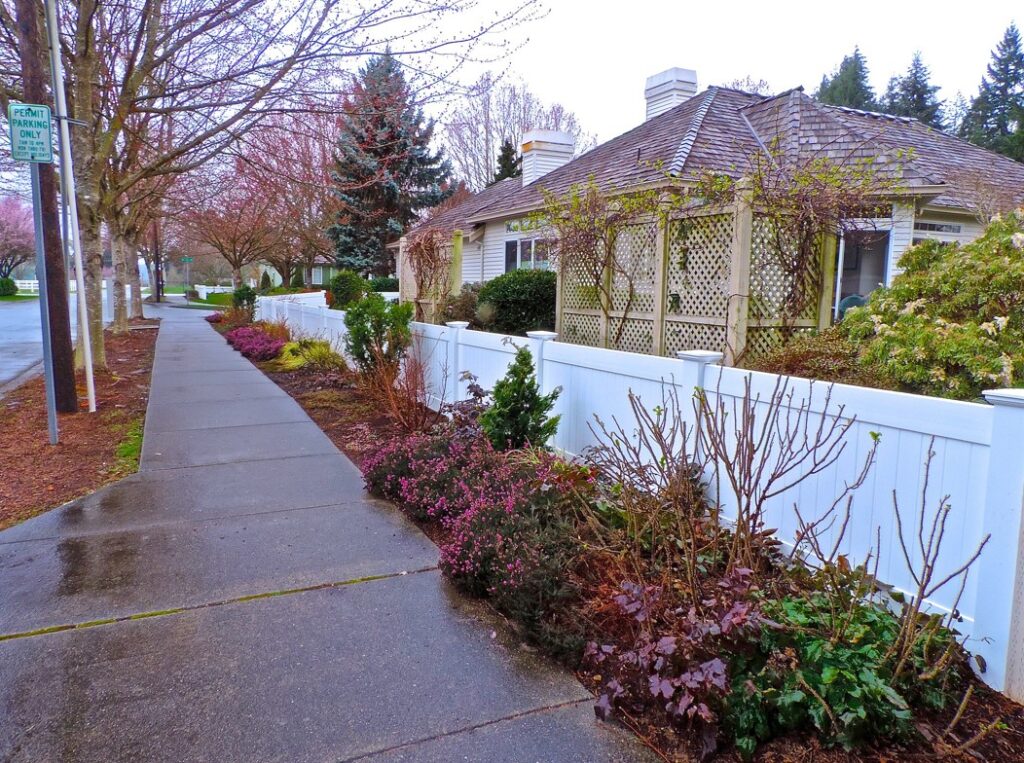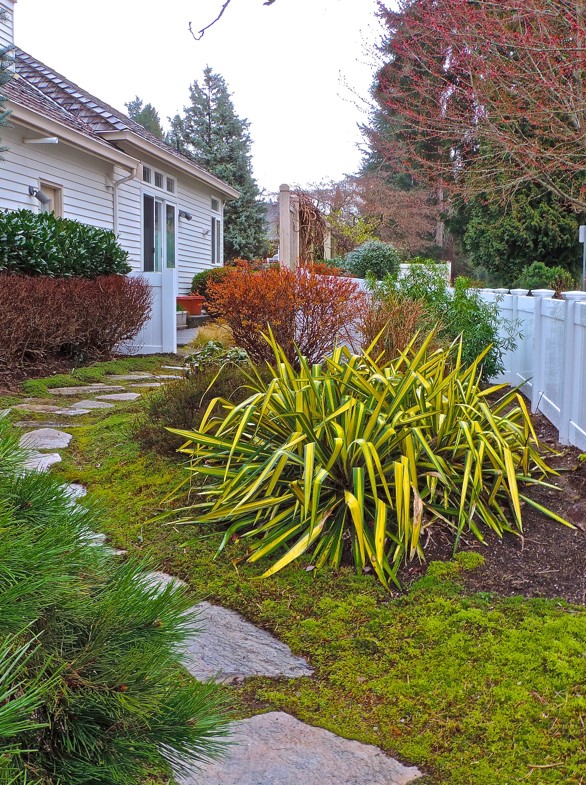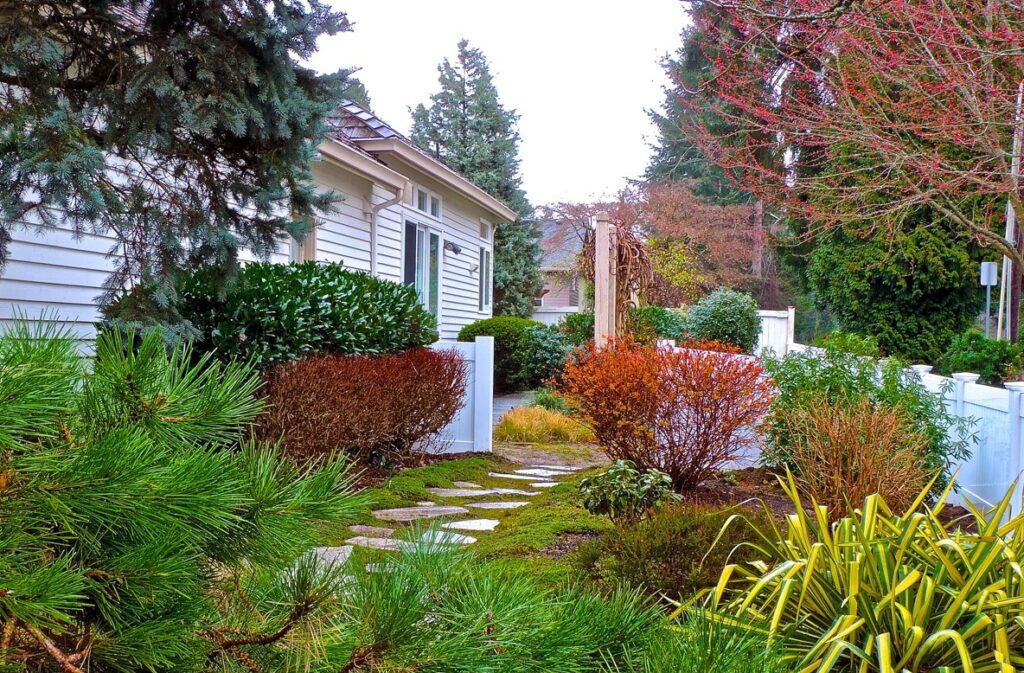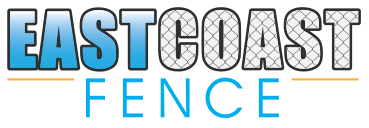
For homeowners and businesses looking to install a fence in Monmouth County, New Jersey, the local zoning regulations regarding setback requirements are important to know. Setback requirements dictate the minimum distance a structure like a fence must be from property lines, roads, and other boundaries.
In Monmouth County, the setback requirements for fences are determined by each individual municipality through their local zoning ordinances. For example, in Freehold Township, the zoning ordinance states that fences cannot be located closer than 10 feet from the front property line and 6 inches from side and rear property lines (Section 190-172). In Middletown Township, the ordinance prohibits fences over 4 feet tall from being located in the front yard area (Section 540-504.A).
Failing to adhere to the setback rules can result in violations, fines, and potentially having to remove or relocate the fence, so it is essential to review your town’s regulations before any fence installation (Sources: Freehold Township Code, Middletown Township Code).
Here are 5 Monmouth County towns that require a minimum 10′ setback from the front property line for fences:
- Freehold Township
- Manalapan Township
- Englishtown Borough
- Howell Township
- Matawan Borough
Understanding Setback Requirements
When starting a property development project setback requirements must be considered. These regulations are an important part of urban and suburban planning, ensuring that structures are appropriately distanced from property lines, streets, and other significant boundaries.
Setback requirements are specific rules established by local zoning ordinances that dictate the minimum distance a structure, such as a fence, building, or retaining wall, must be from a property line, neighboring properties, public right of way, and other defined areas. Some places are particularly tricky if you are next to a commercial establishment or on a corner lot. These regulations aim to promote safety, privacy, and aesthetic harmony within communities, as well as to protect natural resources.
Importance of Setback Regulations for Fences
Setback regulations play a vital role in maintaining order, safety, and aesthetic appeal within communities. By requiring fences to be set back a minimum distance from property lines and rights-of-way, these rules help prevent obstruction of sightlines for pedestrians and vehicles at intersections and driveways. Proper setbacks reduce hazards and facilitate smooth traffic flow.
Moreover, setbacks provide a buffer between properties, allowing sufficient space for maintenance and easing tensions between neighbors over territorial boundaries. An adequate setback helps preserve a sense of open space and prevents a cramped, closed-in feeling for residents.
From an aesthetic standpoint, consistent setbacks create a uniform and appealing streetscape. Varying setbacks with fences of differing heights and materials can appear disheveled and detract from a cohesive neighborhood character.
Setbacks also help protect utility lines, public infrastructure like sidewalks, and emergency access routes by preventing obstructive fence construction too close to these areas of public use.
By adhering to fence setback requirements set forth by municipal zoning laws, homeowners and contractors can avoid code violations, fines, and the potential nightmare of having to tear down or relocate a newly-installed fence. Following the regulations fosters a safer, more visually-appealing community for all residents.
Different Types of Fence Setback Regulations
Here are the different types of fence setback regulations that commonly appear in municipal zoning codes:
Municipal zoning codes provide specific setback requirements that dictate how far back a fence must be positioned from various property boundaries and structures. Common setback regulations include:
Front Yard Setback
This specifies the minimum distance a fence must be set back from the front property line adjacent to the street. Front yard setbacks help maintain open sightlines for traffic and preserve a consistent streetscape aesthetic. Requirements commonly range from 10-25 feet.
Side Yard Setback
Regulates how far back a fence must be from side property boundaries between neighboring parcels. Side setbacks are typically smaller, such as 5-10 feet, but allow space for maintenance access.

Rear Yard Setback
Determines the setback from a property’s rear boundary line. Rear setback minimums are often just a few inches to a few feet to maximize usable yard space behind the home.
Building Setback
Certain municipalities require fences to be set back a minimum distance from the actual residential building footprint on the property, rather than just the property lines.
Corner Lot Setbacks
For lots situated at street intersections, front yard setback requirements may be increased further beyond an interior lot to preserve wider sightlines for traffic safety. Side street setbacks also come into play.
Utility Easement Setbacks
Many codes prohibit fences from being constructed within utility easements running along property boundaries that allow access for maintenance of infrastructure like power lines.
Depending on the municipality, setback distances can also vary based on the fence height, materials used, location within certain zoning districts, or adjacency to specific adjacent use types like commercial areas. Consulting the local code is essential to understanding and adhering to all applicable fence setback regulations. Improper placement can lead to code violations and fines.
Before starting your Monmouth County, NJ fence installation project
Before starting an installation project, it’s a good idea to consider some key factors, including property lines, the necessity of a building permit, and specific regulations pertaining to the front yard, especially if you’re considering adding a wood fence or any structure that might require a retaining wall.
In Monmouth County you must understand the precise location of your property line before any fence installation begins. This ensures that your new fence, whether it’s a privacy, semi-privacy, picket, or any other style offered by Eastcoast Fence, complies with local ordinances. Additionally, certain projects might necessitate a building permit, a critical step in the process that cannot be overlooked.
Homeowners and business owners must be aware of the maximum fence height allowed and any specific setback requirements that might apply to their property. These regulations are designed to maintain visibility and aesthetics within the community, and failing to adhere to them can lead to complications. These guidelines and regulations are important to pay attention to regardless of what type of fence you are putting up.
How Setback Requirements Impact Fence Placement
Understanding and adhering to setback requirements is particularly important when it comes to fence placement. These regulations can significantly influence the type of fence you can install and its location on your property.
Chain Link Fencing
For example, chain link fencing, known for its durability and cost-effectiveness, may need to be positioned a certain distance from the property line if adjacent to a public right of way. This ensures that the fence does not obstruct access or visibility for pedestrians and vehicles.
Retaining Walls
Similarly, retaining walls constructed as part of a landscaping project or to prevent soil erosion might also be subjected to setback requirements. In some jurisdictions, walls exceeding eight feet in height may need to be set back at least half a foot from the property boundary, depending on local codes.
Building Setback
The concept of building setback is essential, referring to the required distance between any structure and the property line. This becomes particularly crucial on corner lots, where visibility for drivers and pedestrians can be a concern. In such cases, fences might need to be placed further back from the property line than on standard lots to maintain clear sight lines.
Adhering to a Straight Line
Additionally, many zoning codes stipulate that fences must follow a straight line parallel to the property line. This rule ensures uniformity and prevents potential encroachment onto neighboring lands or into public spaces.
The Importance of Compliance with Setback Requirements
In the world of property development and enhancement, understanding and adhering to setback requirements as defined by local zoning codes is not just about following rules—it’s about safeguarding the value, legality, and integrity of your property. Setback requirements, which specify the minimum distance structures must be from property lines, neighboring properties, and streets, are crucial for ensuring safety, privacy, and aesthetic harmony within communities. Failure to comply with these regulations can lead to significant legal complications, underscoring the importance of diligence in planning and executing any property improvement projects.
Legal Implications of Non-Compliance
Non-compliance with setback requirements can result in a range of legal consequences that can be both financially and logistically burdensome. For example, if a property owner decides to install a wrought iron fence that extends two feet beyond the allowed boundary, they may inadvertently violate local zoning codes. Such violations can lead to:
- Fines: Property owners found in violation of setback requirements may face fines. The amount can vary depending on the severity of the violation and the local jurisdiction’s regulations. These fines are not just one-time penalties; they can accrue over time if the issue is not resolved, leading to a significant financial burden.
- Forced Removal or Modification: In more severe cases, non-compliance can necessitate the removal or modification of the offending structure. For instance, if a fence is erected seven feet tall but only half a foot away from the property line, when the local zoning code requires a minimum of six feet setback for fences over six feet tall, the property owner may be ordered to remove or alter the fence at their own expense. This not only involves the cost of dismantling or adjusting the structure but also the potential loss of the investment made in the original project.

The Consequences Extend Beyond Fines and Removal
The implications of non-compliance extend beyond immediate legal repercussions. Violations can also affect future property development plans, hinder the sale of a property due to unresolved legal issues, and even impact the overall value of the property. Furthermore, non-compliance can strain relationships with neighbors and the community, especially if the violation encroaches on public rights of way or disrupts the aesthetic and functional harmony of the area.
Ensuring compliance with setback requirements, therefore, is not merely about avoiding penalties but about contributing positively to the community’s safety, aesthetics, and harmony. Whether planning to install a simple picket fence or a more elaborate wrought iron barrier, property owners should meticulously review their local zoning codes, possibly consult with professionals, and even engage with community planning departments to ensure that their projects do not run afoul of local regulations.
Navigating NJ Fence Setback Requirements with Eastcoast Fence
How important adhering to setback requirements in property development and enhancement is cannot be understated. Whether it’s for the installation of a new fence or the construction of a retaining wall, compliance with local zoning laws is paramount. By following these regulations, property owners can avoid the pitfalls of legal complications, ensure the integrity and value of their property, and contribute to the aesthetic and functional harmony of their communities.
Eastcoast Fence has a reputation built on providing quality fencing solutions since 1999. We have navigated the complexities of setback requirements for our clients with precision and care. Our commitment to compliance ensures that each fencing project we undertake not only meets but exceeds the expectations of durability, aesthetics, and legality.
Want A New Fence Quote in New Jersey? Contact Us Now or Call 732-905-0006
Photo credit: https://www.flickr.com/photos/nordique/
